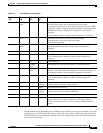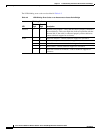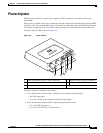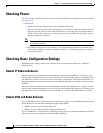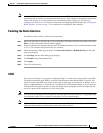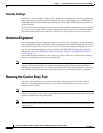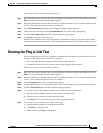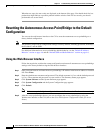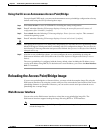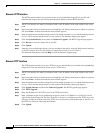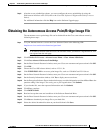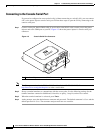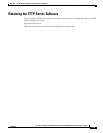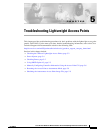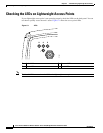
4-11
Cisco Aironet 1300 Series Wireless Outdoor Access Point/Bridge Hardware Installation Guide
OL-5048-06
Chapter 4 Troubleshooting Autonomous Access Points and Bridges
Reloading the Access Point/Bridge Image
Using the CLI on an Autonomous Access Point/Bridge
From privileged EXEC mode, you can reset the autonomous access point/bridge configuration to factory
default values using the CLI by following these steps:
Step 1 Enter erase nvram: to erase all NVRAM files including the startup configuration.
Step 2 Enter Y when the following CLI message displays: Erasing the nvram filesystem will remove all
configuration files! Continue? [confirm].
Step 3 Enter reload when the following CLI message displays: Erase of nvram: complete. This command
reloads the operating system.
Step 4 Enter Y when the following CLI message displays: Proceed with reload? [confirm].
Caution Interrupting the boot process will damage the configuration file. Wait until the access point/bridge Install
Mode LED begins to blink green before continuing with CLI configuration changes. You can also see
the following CLI message when the load process has finished: Line protocol on Interface Dot11Radio0,
changed state to up.
Step 5 After the access point/bridge reboots, you can reconfigure the access point/bridge by using the
Web-browser interface or the CLI (refer to the Cisco IOS Software Configuration Guide for Access
Points).
The access point/bridge is configured with the factory default values including the IP address (set to
receive an IP address using DHCP). To obtain the unit’s new IP address, you can use the show interface
bvi1 CLI command.
Reloading the Access Point/Bridge Image
If your access point/bridge has a firmware failure, you must reload the complete image file using the
Web-browser interface or by using the console serial port. You can use the browser interface if the access
point/bridge firmware is operational. However, you can use the console serial port when the access
point/bridge has a corrupt image.
Web-Browser Interface
You can also use the Web-browser interface to reload the access point/bridge image file. The
Web-browser interface supports loading the image file using HTTP or TFTP interfaces.
Note Your autonomous access point/bridge configuration is not changed when you use the browser to
reload the image file.



